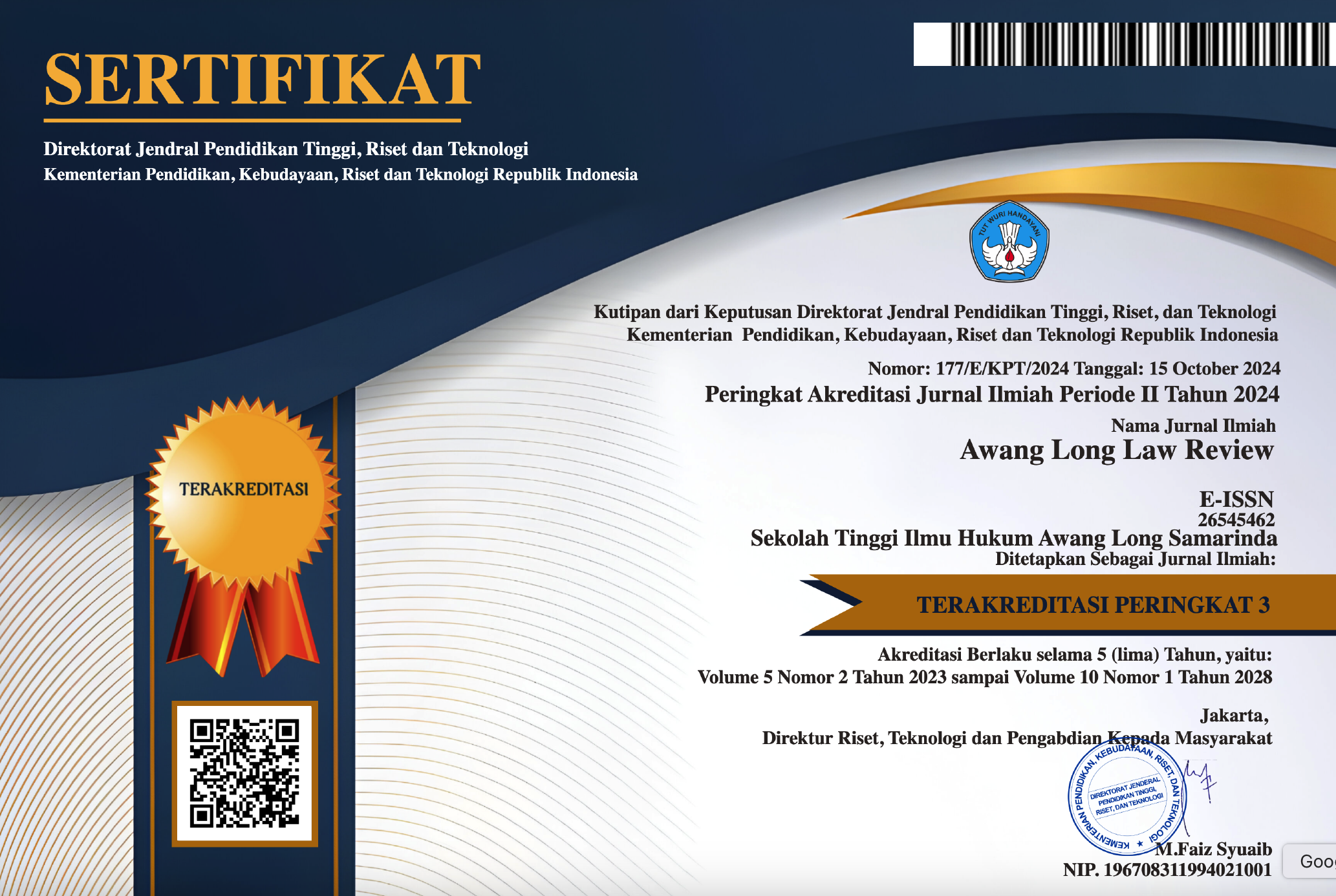ERADICATION OF CRIMINAL ACTS OF CORRUPTION TOWARDS DIRECTORS OF COMMANDITAIRE VENNOOTSCHAP WHO PERFORM CRIMINAL ACTS OF CORRUPTION
Abstract
This study aims to determine and to qualify criminal acts of corruption within article 2 and article 3 of Law Number 31 Year 1999 On Eradication of Criminal Acts of Corruption, and to determine the application of material criminal law and legal considerations by the judges in deciding the verdict
The statute approach, which examines laws that are related to research problems, is the approach used in this normative research. In addition to the statue approach, the author also carries out a case approach, which means that this research is complemented by a review of the judge's considerations in the decision. The primary and secondary materials obtained were then analyzed descriptively to then be presented qualitatively.
This research concluded that: 1) Article 2 and Article 3 of the Law of 1999 has several differences. One of the differences can be found on the subject. Article 2 applies to anyone who commits the act and Article 3 applies to anyone with a "post or position" who abuses the authority in committing the act. This means the subject of Article 3 only refers to Civil Servants; and 2) the application of material law against the CV Director who committed the criminal act of corruption is improper due to the facts that the defendant as a CV director is not considered as a Civil Servant and the judge consideration sentenced the defendant with subsidiary indictment ( Article 3) because according to the judges his action fulfills the materials of the article.
Downloads
References
Adami chazawi, 2002, Lesson of Criminal Law Part I, PT Raja Grafindo Persada, Jakarta, p. 79.
Andi Hamzah, 2001, Anthology of Criminal Law and Criminal Procedure, Ghalia, Jakarta.
Andi Hamzah, 2001, Anthology of Criminal Law and Criminal Procedure, Ghalia, Jakarta, p. 22.
Arnas, Y., Ahmad, A., & Fajarianto, O. (2023). The Effectiveness of Learning Management System in Higher Education: A Case Study of Social Sciences Course Content. IJESS International Journal of Education and Social Science, 4(2), 114-118.
Aziz Syamsuddin, 2014, Special Crimes, Sinar Graphic, Jakarta, p. 8.
Databoks, 2018, 174 Private Officials Arrested in Corruption Crimes in 2018, accessed from
https://databoks.katadata.co.id/datapublish/2018/12/04/174-gawasta-tertangkap-tindak-pidana-korupsi-pada-2018 on 3 December 2019.
I Made Pasek Diantha, 2017, Normative Legal Research Methodology in Theory Justification
Jubaedah, S., Mardi, M., Aryanto, Y., & Fajarianto, O. (2022). Studi Empiris Nilai Perusahaan Pada Masa Pandemi Coronavirus Disease. Jurnal Akuntansi dan Pajak, 22(2), 799-815.
Law Number 31 of 1999 as amended into Law Number 20 of 2001 Concerning the Eradication of Criminal Acts of Corruption Law, Kencana Prenada Media Group, Jakarta, p. 2.
Nursahidin, N., Brajadenta, G. S., Jubaedah, S., & Fajarianto, O. (2023). Improving health clinic services through the application of QR code-based digital technology. Jurnal Aisyah: Jurnal Ilmu Kesehatan, 8(2).
Peter MahmoudMarzuki as quoted in Agus yudha Hermoko, 2010, Law of Agreement on the Principle of Proportionality in Commercial Contracts, Jakarta: Kencana, p. 38.
Saifudien Djazuli, 2014, Definition of Crime, accessed from http://saifudiendjsh.blogspot.co.id/2014/02/pengertian-tindak-pidana.html, on 4 December 2017.
Sudrajat, D., Siswondo, S., Harsono, Y., & Fajarianto, O. (2023). THE INFLUENCE OF LEADERSHIP STYLE AND WORK DISCIPLINE ON EMPLOYEE PERFORMANCE. International Journal of Economics, Business and Accounting Research (IJEBAR), 7(2), 641-648.
Terry Hutchinson, 2002, Researching and Witing in Law, Lawbook.co, p. 9
Copyright (c) 2023 As'ad Djaelani Sibghatullah BW

This work is licensed under a Creative Commons Attribution-ShareAlike 4.0 International License.







